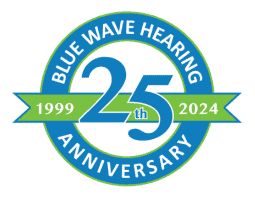- Alcohol and Hearing Health - April 9, 2025
- How Smoking Can Harm Your Ears - March 11, 2025
- Succeeding in the Workplace with Hearing Aids - February 10, 2025
When researching hearing loss and hearing aids, oftentimes we come up with more questions than answers. As professional hearing care enthusiasts, we’re happy you’re here.
According to the National Institute on Deafness and Other Communication Disorders, only about one out of five people who would benefit from a hearing aid actually use one. So kudos to you for beginning your better-hearing journey with us! Let’s squash those hearing aid misconceptions and myths now so you can be confident in taking the next step.
The following 10 myths and misconceptions about hearing and hearing aids are something you’ll want to hear!
One.
Myth: Personal sound amplifiers are the same as hearing aids.
Fact: The two are not one and the same. Amplifiers were created for recreational activities, increasing overall volume rather than adapting to your environment the way hearing aids do. These devices can actually damage hearing rather than help it and are not FDA approved to replace hearing aids.
Two.
Myth: Hearing aids will make everything sound too loud.
Fact: With advanced sound processing and noise-reduction technology, today’s hearing aids are ready for whatever listening situation you find yourself in. Going to a busy restaurant? A sporting event? Simply want to relax and watch television? Hearing aids are now fit to your unique hearing loss, your lifestyle, and your most frequent listening situations.
Three.
Myth: Buying hearing aids online or by mail saves me time and money.
Fact: Consumer information from the Federal Trade Commission warns consumers that “buying a hearing aid online or through the mail is risky. In fact, some states don’t allow hearing aids to be sold through the mail at all. That’s because an aid needs to be custom fitted and tested to be sure it’s working properly.”
As an AudigyCertifiedTM practice, we utilize an ongoing education process for our entire office that ensures we are experts at figuring out your better-hearing goals, diagnosis, and listening lifestyle, as well as how to provide support for each piece.
Four.
Myth: Hearing aids are ugly and remind people of old age.
Fact: Today’s consumers are more connected than ever before, with mobile access anywhere and everywhere. This ever-evolving technology has stemmed to hearing aids. New technology means countless fits for all lifestyles, from receiver-in-the-canal hearing aids to those that are designed to be virtually invisible. You could say that hearing loss is more noticeable than a hearing aid!
Five.
Myth: Hearing aids are just too expensive.
Fact: Well-fit, well-maintained devices, along with care from a hearing care professional, are invaluable. Your hearing care professional is able to adjust your new technology to your lifestyle so the devices can perform at an optimum level. They are also there to help you relearn how to hear with the technology.
The American Speech-Language-Hearing Association says it perfectly: By working with a hearing care professional, you are purchasing professional care and services to ensure that the correct hearing aid is selected and that proper programming of the hearing aid is completed, plus additional follow-up services.
Six.
Myth: Hearing aids will restore my hearing to normal.
Fact: Hearing aids are called “aids” because they help — they don’t cure. They help retrain your brain to pick up the sounds that hearing loss has conditioned the brain to miss. Because of this, getting your hearing aids to work for you instead of the other way around is a process, not a single appointment.
Seven.
Myth: I can hear in one ear, so I only need one hearing aid.
Fact: When one ear is slightly better than the other, we learn to favor that ear for the telephone, group conversations, and so forth. It can give the illusion that “the better ear” is normal when it isn’t. Most types of hearing loss affect both ears fairly equally, and about 90% of patients are in need of hearing aids for both ears.
Eight.
Myth: I’ve tried hearing aids before and they didn’t work for me.
Fact: Hearing aid technology changes as rapidly as any other technology out there. Advancements in digital hearing aids make for clearer speech, less background noise, and an overall more enjoyable and natural listening experience. Again, it’s important to go to a trusted hearing care professional at an AudigyCertified practice to help get the most appropriate device and to learn how to use it properly.
Nine.
Myth: I only have trouble hearing certain sounds, not hearing in general, so I don’t need hearing aids.
Fact: Sound familiar? Hearing loss is just that: a loss of certain sounds. Hearing care professionals program hearing aids to amplify the sounds you’re missing and enhance the hearing that’s left. If you’re missing some of the sounds, you’re missing all of the conversation.
Ten.
Myth: Tinnitus is an incurable disease.
Fact: Tinnitus is not a disease; it’s a condition resulting from things like loud-noise exposure and neurological damage. There is no cure, but there is treatment. Hearing care professionals can help you determine whether tinnitus is present and whether it is mild, moderate, or severe. They can then create a customized tinnitus treatment plan that may include hearing aids, earwax removal, changing medications, or other alternatives.
Now that you’ve gotten an earful of facts from us, you’ve probably noticed a theme: the importance of a hearing care professional. Make sure you take the time to find one whom you trust, who takes the time to get to know you and your hearing needs. This is essential to getting the most out of your technology and, in turn, your life.

